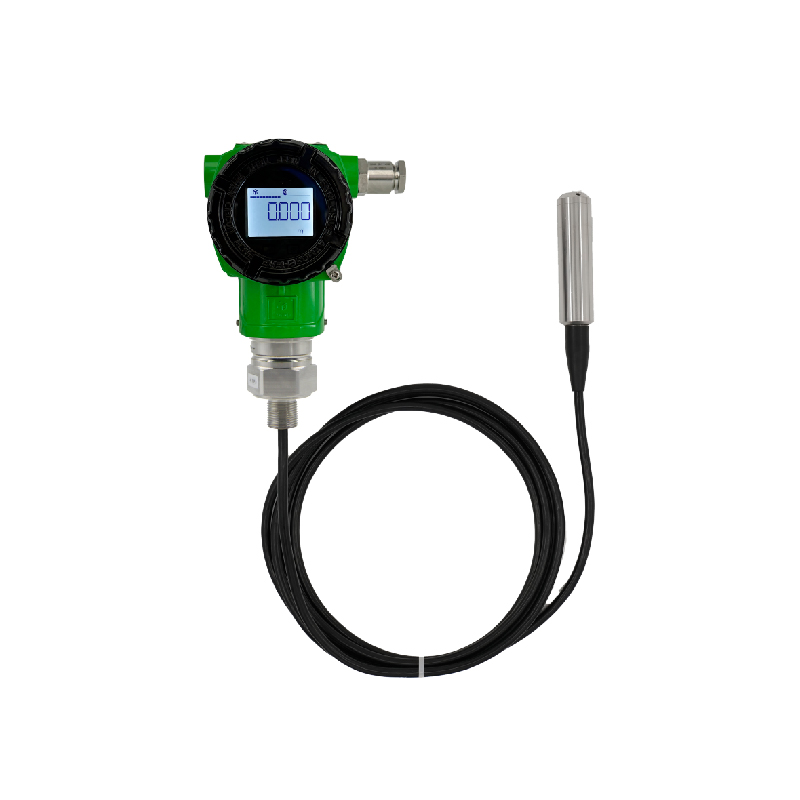In many scenarios of industrial production and daily life, submersible level gauges are widely used in liquid - level measurement due to their advantages of simple structure, convenient installation, and low cost. They are used in applications such as the monitoring of storage tank liquid levels in the petrochemical industry, the control of water pool levels in urban water supply systems, and the detection of water pool levels in sewage treatment plants. However, inaccurate measurement often occurs during use, which seriously affects their normal functions. The following will deeply analyze the reasons and provide effective solutions.

Reasons for Inaccurate Measurement
Sensor Malfunctions
Aging and Damage: When working in harsh environments for a long time, such as high - temperature, high - humidity, or strongly corrosive liquid environments, the sensitive components of the sensor are prone to aging. When used in chemical enterprises to measure the liquid level of corrosive chemical liquids, the sensor may be damaged by corrosion, resulting in a decline in measurement accuracy and the sending of incorrect signals.
Calibration Failure: After the submersible level gauge has been used for a period of time, the internal calibration parameters may drift due to factors such as vibration and temperature changes. The originally accurate calibration fails, and thus the measurement results deviate from the actual liquid level. In some large - scale industrial equipment, the frequent start - up and shutdown can generate vibrations that may affect the calibration of the level gauge.
Installation Problems
Improper Location: If the level gauge is installed close to the container wall or bottom, the adsorption effect of the container wall and the sediment at the bottom will interfere with the measurement. In a large - scale water storage tank, a level gauge installed close to the tank wall may have its measurement accuracy affected by the water film on the tank wall; when installed close to the bottom, it is easily interfered by sediment and other substances.
Incorrect Installation Depth: If the installation depth does not match the preset range, the measurement range of the level gauge will be limited or over - ranged, resulting in inaccurate measurement. When the actual liquid level exceeds the measurement range set by the level gauge, an accurate reading cannot be given.
Influence of Medium Characteristics
Density Changes: The density of the measured liquid is not constant. When the liquid composition changes or the temperature and pressure change, the density changes accordingly. In the petroleum refining process, the densities of oil products at different stages are different. If the level gauge does not consider the density change for correction, the measurement results will deviate.
Interference from Impurities and Bubbles: The presence of impurities or bubbles in the liquid will hinder the propagation of ultrasonic waves or change their reflection characteristics. In sewage treatment, the suspended solids and the bubbles generated by aeration in the sewage will interfere with the measurement of the level gauge, causing fluctuations in the measurement data.
Measures to Solve Inaccurate Measurement
Sensor Maintenance and Replacement
Regular Detection: Establish a regular detection system and formulate a reasonable detection cycle according to the equipment usage frequency and environmental conditions. For example, for level gauges used in harsh environments, conduct a monthly detection to timely detect signs of sensor aging and damage.
Timely Calibration and Replacement: Once calibration failure is detected, recalibrate according to the instruction manual. If the sensor is severely damaged, it needs to be replaced in a timely manner. Select high - quality sensors suitable for the working conditions and conduct strict debugging and calibration after installation.
Standardize the Installation Process
Reasonable Site Selection: Before installation, carefully survey the container structure and select a location away from the container wall and bottom to ensure that the measurement is not interfered with. For large - scale containers, installation in the central position can ensure measurement accuracy.
Precise Depth Control: Strictly determine the installation depth according to the level gauge range and actual needs, and re - confirm whether the depth meets the requirements after installation.
Coping with Changes in Medium Characteristics
Real - time Density Monitoring: For media with easily changing densities, equip density monitoring equipment to obtain density data in real - time and correct the liquid - level measurement results according to the formula.
Pre - treatment of the Medium: Install a filtering device and a degassing device in front of the level gauge to filter impurities and eliminate bubbles, ensuring that the measured medium is pure and reducing interference.


